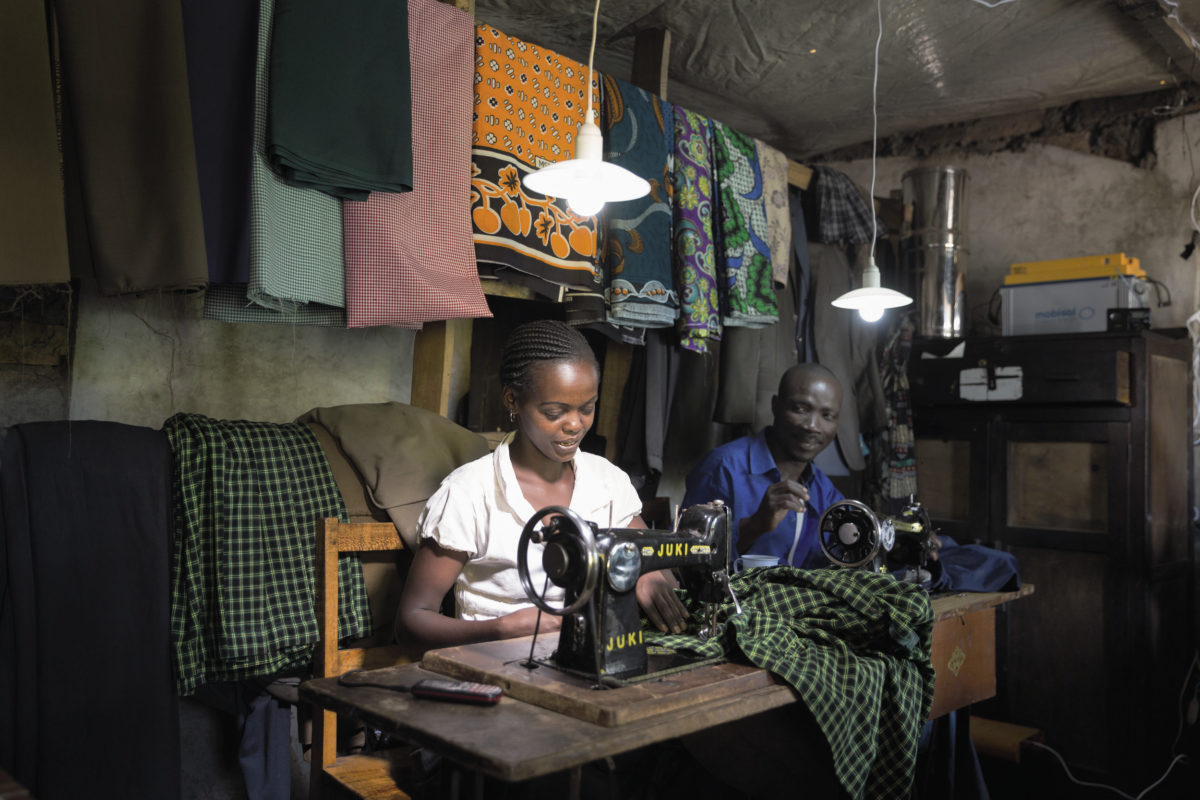At an event held in Nairobi, the Government of Kenya, together with the World Bank, presented a roadmap to universal energy access in Kenya. The Kenya National Electrification Strategy (KNES) was launched yesterday and provides a roadmap to achieving the goal by 2022.
To date, 6.9 million people have been connected to the grid – or around three-quarters of the population, Kenya’s ministry of Energy tweeted on the occasion. The new plan sets out a plan for connecting the remaining 650,000 households in 14 off-grid counties.
“Tremendous achievement in scaling up connectivity has been made over the last few years. Total access to electricity now stands at 75%. However, there was a need to come up with a new National Electrification Strategy to deal with the challenges of bringing the entire country under electrification in an economically viable manner,” said Charles Keter, Cabinet Secretary, Ministry of Energy.
The government, citing the value of off-grid solar installation on multiple occasions, will rely heavily on renewable energy resources to achieve its goal. A statement made by the World Bank further says that the electrification strategy will make use of a geospatial tool, which will allow national and county policymakers to make informed decisions about the requirements for both grid and off-grid investments.
“The World Bank is committed to helping Kenya extend modern, affordable, reliable and clean energy services to all its citizens,’’ said World Bank Country Director, Felipe Jaramillo. “Currently, the Bank is financing electrification under the ongoing Kenya Electricity Modernization Project (KEMP) and Kenya Off-grid Solar Access Project (KOSAP) which targets to connect 235,000 and 1.3 million new beneficiaries, respectively.”
Kenya also launched the Electricity Sector Investment Prospectus, which maps investment opportunities over the next five years. The instrument considers power generation, transmission, distribution, off-grid electrification, mini-grids and solar systems for homes and institutions. Overall, it finds that the country offers $14.8 billion in energy investment opportunities.
Kenya’s Government said the plans are in line with its Vision 2030 plans, which are on track to make the country a middle-income industrial nation. To this end, the country is pursuingwhat it calls the “Big Four Agenda”: Affordable housing, manufacturing, food security and universal healthcare.
Popular content
Earlier this year, BloombergNEF released a report highlighting the economic value of off-grid solar for Africa. Grid expansion into low-income rural areas is economically unviable, it found, while decreasing system costs for solar have presented themselves as reliable alternatives.
BloombergNEF calculates that energy from solar home systems costs around $1.5/kWh and if sourced from microgrids, would be $0.29-0.77/kWh. The report goes on to claim that the costs of electricity after a new connection would be $1/kWh, hence higher than the costs of energy if a microgrid is deployed.
In this vein, the Global off-grid solar Association Gogla, conducted a survey, in which it determined the economic effects of deploying off-grid solar systems for 2,300 respondents in East-Africa, including Kenya.
The data shows that 58% of the households, which had recently installed an off-grid solar system, worked more or developed their enterprises, due to the availability of electricity. Additionally, 36% of the households reportedly ramped up their average income by $35 per month. In the region in question, this is equivalent to 50% of the average monthly GDP of a household.
Furthermore, thanks to electric lighting, the respondents reported that they could spend 44% more time at work or on chores. Previously, nightfall had prematurely interrupted these activities. This improvement generates income for the households and increases the economic activity of business owners, the report says.
With the possibilities of using technologies like smartphones more, 11% of the respondents reported that they had started a new business following electrification from off-grid solar systems. In 7% of the households, at least one member of the household reported having received a new job as a result of the solar energy deployment.
This content is protected by copyright and may not be reused. If you want to cooperate with us and would like to reuse some of our content, please contact: editors@pv-magazine.com.



2 comments
By submitting this form you agree to pv magazine using your data for the purposes of publishing your comment.
Your personal data will only be disclosed or otherwise transmitted to third parties for the purposes of spam filtering or if this is necessary for technical maintenance of the website. Any other transfer to third parties will not take place unless this is justified on the basis of applicable data protection regulations or if pv magazine is legally obliged to do so.
You may revoke this consent at any time with effect for the future, in which case your personal data will be deleted immediately. Otherwise, your data will be deleted if pv magazine has processed your request or the purpose of data storage is fulfilled.
Further information on data privacy can be found in our Data Protection Policy.